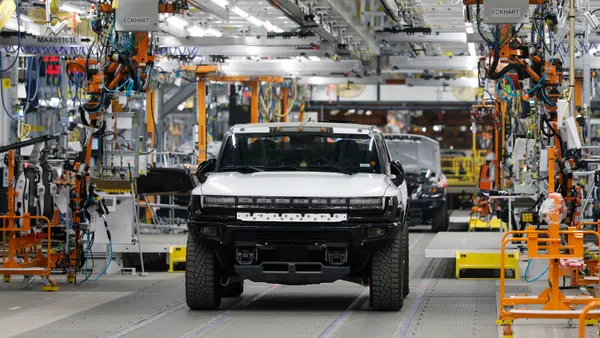Dive Brief:
- Dropshipping, when a manufacturer fulfills orders directly to the end consumer, is a growing set-up in the era of e-commerce, and 53% of manufacturers say it has increased their profit margins, according to a survey of 180 DiCentral customers conducted by Lehigh University.
- More than 80% of the retailers surveyed said dropshipping resulted in increased revenue, and more than 60% of retailers said it also reduced their costs. This is due to the larger customer base that comes as a result of selling products online without the cost associated with storing goods and maintaining a physical store presence.
- The study found manufacturers also benefit financially from dropshipping because retailers tend to negotiate smaller margins in these cases. Some manufacturers have cut out the retailer entirely with their own boutique store — which companies like Under Armour, Michael Kors and Oakley have all done — or their own online marketplace, according to the report.
Dive Insight:
In the past, manufacturers have often avoided the dropshipping style of fulfillment because they assumed bulk orders to retailers would be better for their balance sheets. But of those who have given dropshipping a try, the majority have benefited from making the transition, according to the report.
Manufacturers are able to sell expensive and slower moving items through more retailers thanks to dropshipping, which allows manufacturers to list more high-price items for sale without the risk of storing valuable inventory off-site.
"Enterprise dropship has been around for decades but has recently gained popularity due to the growing consumer expectations for broader assortment and category selection," Thuy Mai, president and CEO of DiCentral, said in a press release emailed to Supply Chain Dive. "In an effort to improve the customer experience and increase revenue, retailers are expanding their virtual inventory without incurring additional carrying and fulfillment costs by utilizing dropship programs."
There are important challenges to consider, though. Shipping individual orders is a considerable cost for a manufacturer implementing dropshipping.
Retailers and manufacturers also listed technology systems like Enterprise Resource Planning (ERP) software and Warehouse Management Systems (WMS) as top challenges in the dropshipping transition. Such systems must be in sync so real-time inventory is properly connected to online marketplaces and sales aren't made on out-of-stock items. This can be especially challenging for manufacturers producing goods for multiple retailers and dealing with multiple systems.
"Manufacturers struggle to control the costs of unique business processes surrounding multiple fulfillment models, such as standard bulk fulfillment and retailer-led e-commerce and dropship initiatives," the report reads. "Supporting the dropship programs of multiple retailers increases complexity for manufacturers, as they take on more responsibility for order management, inventory, and fulfillment."
Challenges abound, but benefits go beyond better margins. Respondents reported dropshipping improved the relationship between manufacturers and retailers, with a majority of manufacturers saying it improved the relationship "significantly," improved trust and resulted in greater partnership and solidarity.
This story was first published in our weekly newsletter, Supply Chain Dive: Operations. Sign up here.














